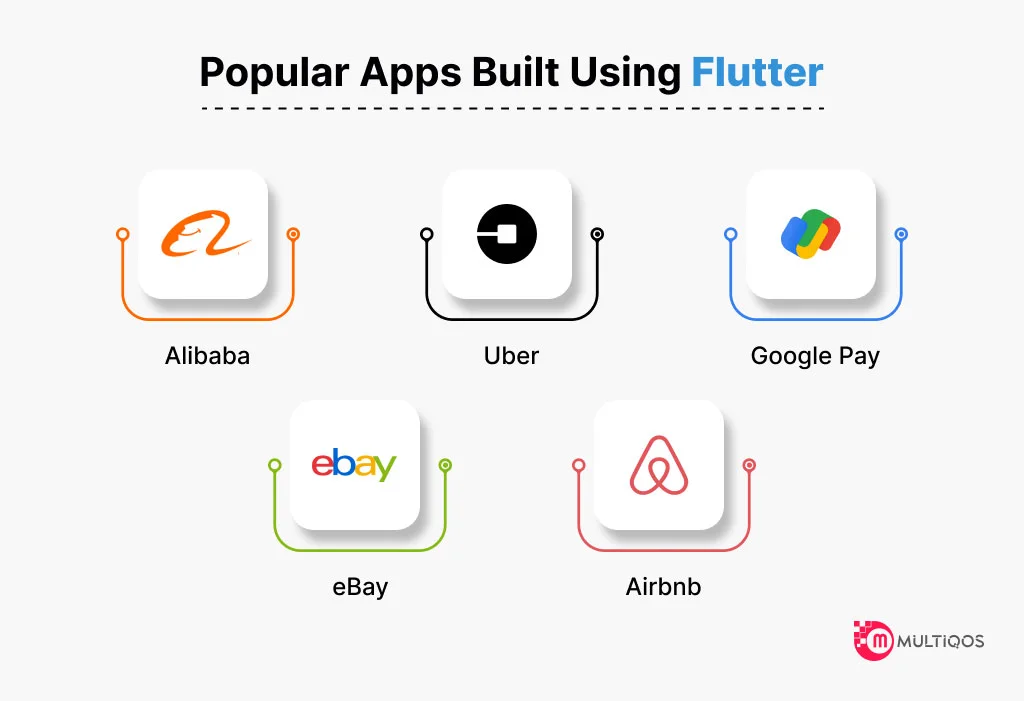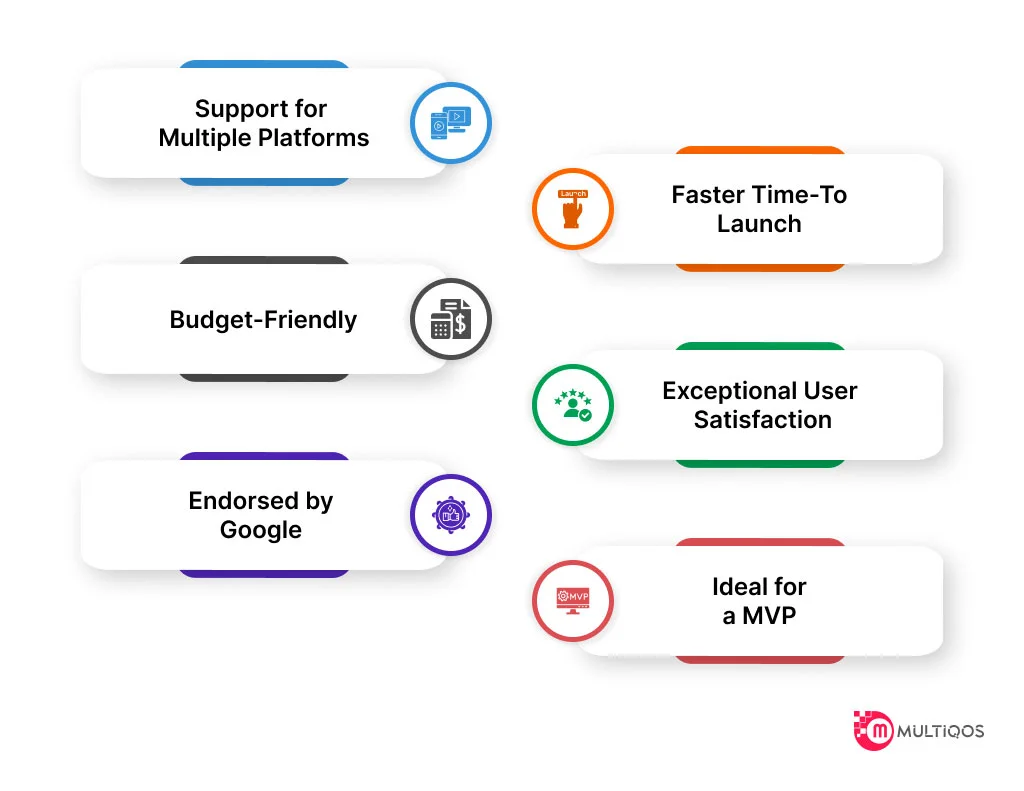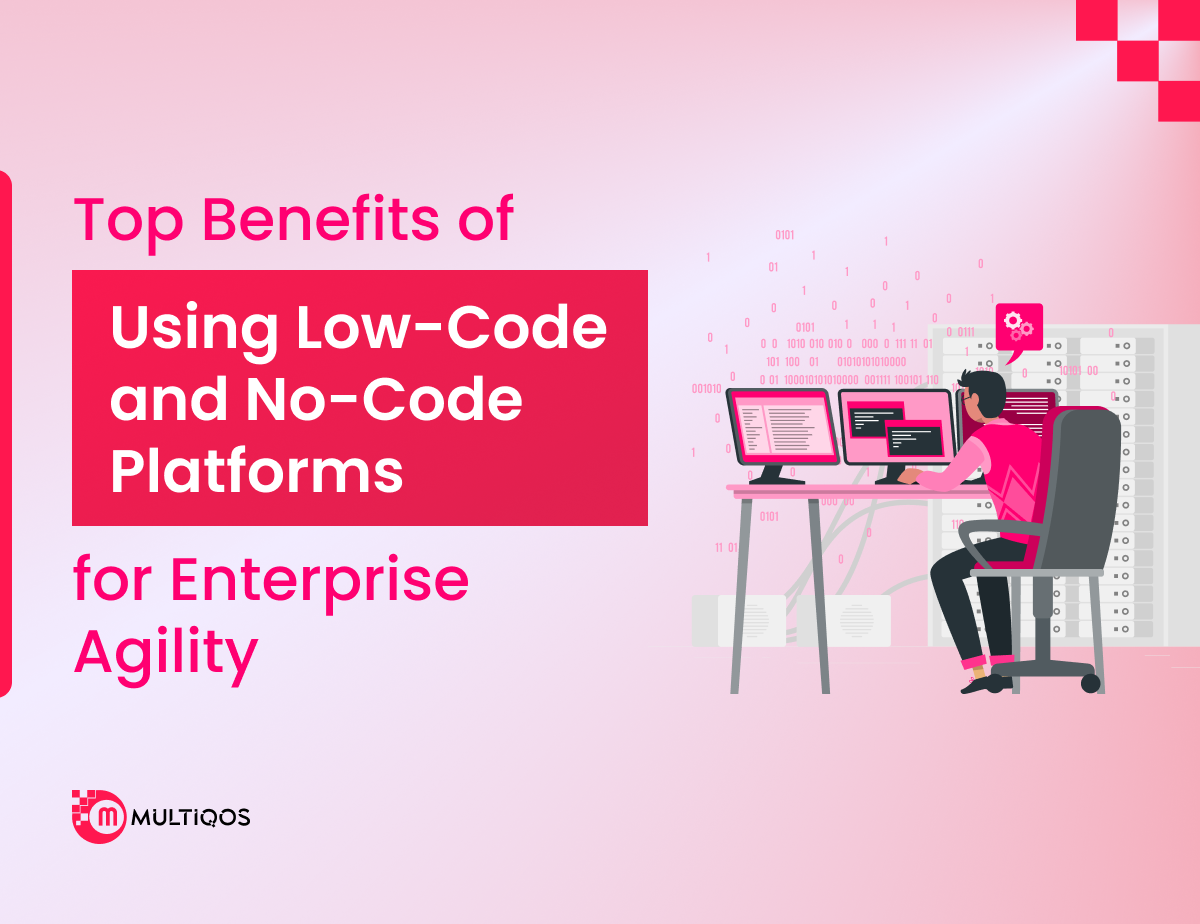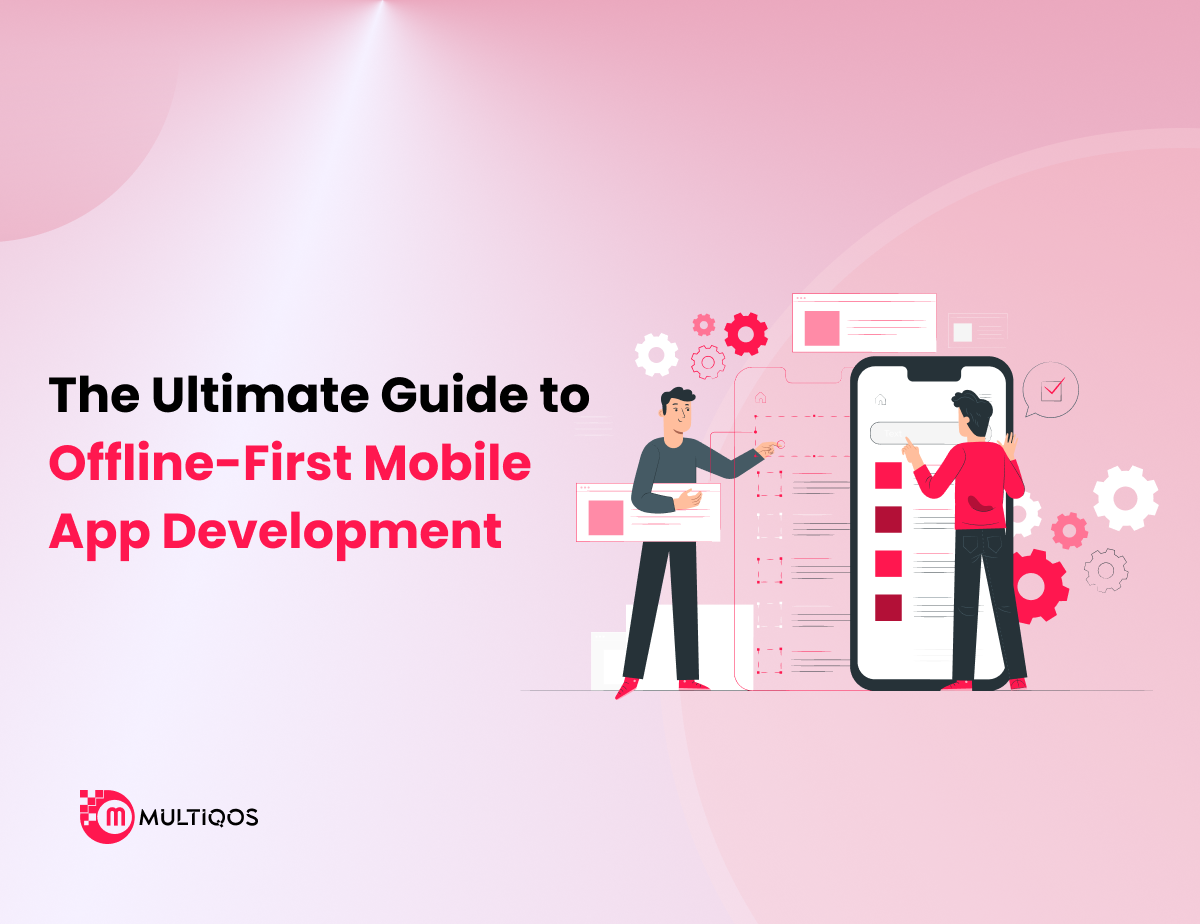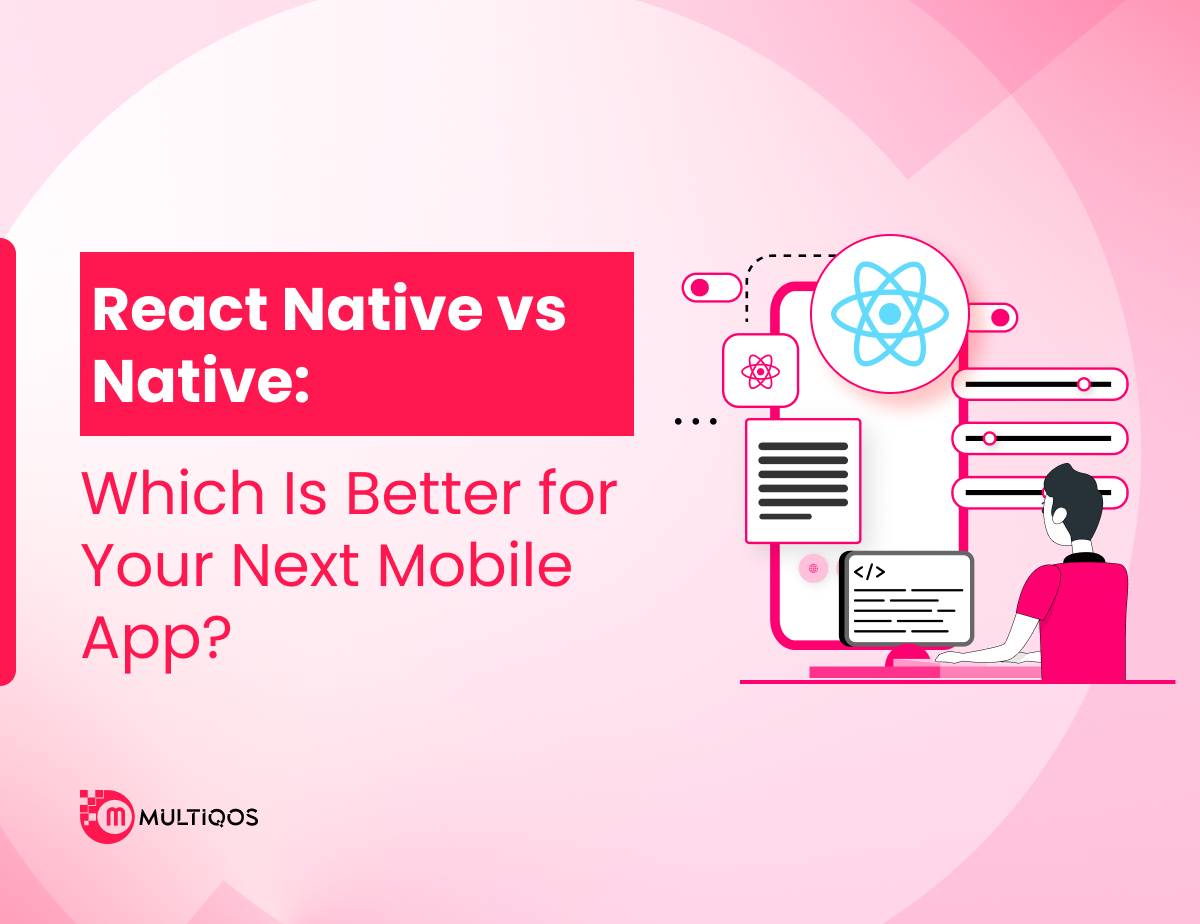Flutter App Development Guide: All You Need to Know
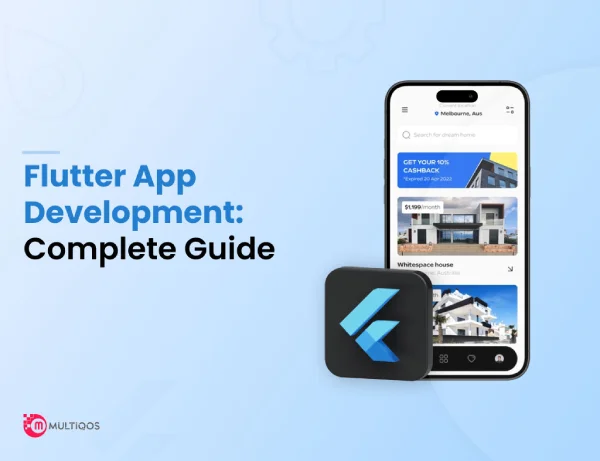
In the realm of mobile devices and their applications, it is common to use numerous apps on your mobile phone daily. Chances are, even without realizing it, you’ve interacted with apps created using Flutter. Seriously? Well, yes! The impact of Flutter’s relatively short history is evident if you’ve ever purchased on Alibaba, run advertising campaigns through Google Ads, conducted transactions via Google Pay, or redeemed digital coupons.
Since its alpha version debut in May 2017 and the official stable version release in December 2018, Flutter has rapidly gained remarkable popularity, as evidenced by its 145k stars on GitHub. Additionally, considering its increasing popularity, Google introduced Flutter 2 in March 2021, followed up with Flutter 3.3 in August 2022. These versions introduced enhancements, features, and functionalities that enhance the user experience.
However, the constant question thrives: Is Flutter app development worth the hype?
To help you seek a viable answer to this question, we undertook detailed research to unveil the pros and cons of Flutter. This blog will assist you in determining whether Flutter is the right choice for your upcoming app project. So, let’s get started!
What is Flutter?
Flutter is an open-source technology developed by Google. It serves as a versatile solution for crafting applications across mobile, desktop, and web platforms using a unified codebase. However, it is essential to note that Flutter is categorized as an SDK (Software Development Kit), distinguishing it from a conventional framework or library. Notably, it comprises both the SDK itself and a widget-based UI library.
In essence, Flutter stands as a UI toolkit, a creation of Google, designed to facilitate the development of cross-platform mobile applications for various devices while relying on a single codebase.
Within the Flutter framework, you’ll find:
- Library: This component encompasses various reusable UI elements such as sliders, buttons, code snippets, and text input forms. These elements can be seamlessly integrated into your application to execute common functions efficiently.
- Framework: The framework defines an application’s structure or architectural blueprint. It comprises a set of tools that serve as the foundation for your app. However, you will have to write the necessary code to realize the complete structure and achieve the desired outcomes.
- SDK: An SDK amalgamates multiple tools, including libraries, documentation, APIs, frameworks, and more. It provides all the essential resources for your software development endeavors.
In simpler words, Flutter app development equips you with all the essential components to create cross-platform applications that seamlessly function across multiple platforms.
Read Also: Top Flutter Development Tools To Know About In 2024
What Kind of Apps You Can Develop in Flutter?
Flutter app development is ideal if you are aiming to create cross-platform 2D apps accessible on both platforms, including the web and desktop. Due to its wide range of benefits, it is already being used by a wide range of businesses worldwide. This includes Alibaba, Airbnb, Yandex, and Uber. However, Flutter can be utilized for developing applications targeting:
- Retail: Usually, retail applications share common fundamental features like product comparison, catalogs, store locators, promotions, and more. Building separate apps for iOS and Android with the same functionalities would be inefficient. This is where Flutter comes in as a time and cost-efficient option.
- Fintech: Many financial institutions opt for Flutter over native solutions due to its enhanced security. Unlike native apps, Flutter-based apps resist reverse engineering, offering an added layer of protection. It also enables the integration of advanced security technologies like Touch ID, Face ID, or fingerprint scanners.
- Suppliers and Franchisees: A lower budget is usually allocated for internal apps compared to client apps. Now, Flutter offers a pre-established environment, eliminating the need to start development from the ground up. Thus, many suppliers and franchisees opt to build their internal applications using Flutter.
Large Businesses: Businesses engaged in call center operations, courier services management, and complex internal processes stand to derive significant benefits from using Flutter apps.
What are the Main Features of Flutter – a Unique App Developing Tool?
Flutter allows its developers to build apps with user-interactive designs and smooth animations in less time and cost. To understand the how behind it, let us know its key features:
- Cross-platform Support: Using a unified codebase for mobile, web, and desktop platforms, you can create natively compiled applications. This not only saves time but also reduces costs significantly.
- Available SDK and Native Features: Flutter uses its platform APIs, native code, and third-party connections to simplify the development process while providing a positive developer experience.
- Widgets: Developers can use and alter widget libraries of Flutter to create user-focused applications. This enables it to provide users with a seamless and error-free experience.
- Hot Reload: Hot Reload stands out as a critical feature in Flutter app development, providing developers with increased creative flexibility. It enables developers to modify their code at any point, instantly reflecting the changes in the application in real time.
- Open Source: Flutter is open source and completely free to use. It allows the integration of packages and third-party libraries. Thus, you can easily include your app’s movies, chats, advertising, or other features.
Why Choose Flutter for Mobile App Development?
It is natural to believe that each cross-platform framework might offer distinct functionalities and features that fulfil specific requirements. However, let’s pause momentarily and delve into what distinguishes Flutter from its counterparts. This will help us understand what makes Flutter stand out in the realm of mobile app development frameworks.
- Faster Development Process: Flutter’s code reusability feature enhances the development process, which is crucial for cross-platform apps. The SDK’s developer-driven features contribute to a seamlessly streamlined development process. Additionally, its Hot Reload facilitates rapid code changes, which are instantly reflected in the final product.
- App Developed on Multiple IDEs: Supported by JetBrains, Flutter integrates with Android Studio and various other IDEs like IntelliJ, WebStorm, and PyCharm. It serves as a boon for developers unfamiliar with Android Native development. VS Code is a viable IDE option, and Flutter works seamlessly.
- Proprietary Rendering Engine: Flutter’s rendering engine feature allows it to create high-performance and platform-specific widgets. This independence from web browsers or platform-specific technologies enhances its versatility.
- Faster Turn-Around-Time: Flutter’s distinctive features contribute to expeditious app development. This enables rapid development, deployment, and integration of new features and upgrades across iOS and Android platforms.
- Organized Documents and Resources: The Dart programming language is simple to understand, especially for developers with foundational knowledge of JavaScript or other C-like languages. Thus, Flutter allows them to utilize the powerful plugin manager and develop interactive apps with styles, animations, and potential alterations.
- App Performance Excellence: Application performance significantly impacts user experience. Flutter stands out as the premier cross-platform UI development kit, ensuring the creation of robust applications. This is particularly evident in scenarios involving complex UI animations.
- Multi-Platform Reach: The most recent iteration of Flutter empowers developers to create applications that seamlessly operate across web, mobile, desktop, and TV platforms. Considering the increasing significance and prevalence of IoT development across industries, it is highly likely that Google will introduce a new Flutter release in alignment with this trend.
How To Get Started With Flutter App Development?
Every application demands a well-organized development process to guarantee its success in the market, and Flutter development is no different. To harness the full potential of this software, it is crucial to adhere to these steps:
Step 1: Establish the Flutter App Development Environment
Initiating Flutter app development requires the initial setup of the environment. This involves obtaining the Flutter SDK and selecting a developer. Although the code lab assumes the use of Android Studio, you are free to opt for your preferred environment. The code lab can be executed using either a physical Android or iOS device in developer mode or through the iOS simulator, Android Emulator, or Chrome browser.
Step 2: Create a Flutter Project
Once you’ve configured the environment for Flutter app development, the next step is creating a new Flutter project. Begin by opening the terminal window and navigating to the desired directory for project creation. Subsequently, execute the command ‘flutter create hello_flutter.’ Afterward, move into the project directory (‘cd hello_flutter’) and open the project using the editor of your choice.
Step 3: Launch the Project
Refer to the documentation for executing the code, whether in Visual Studio Code or Android Studio. Assume Visual Studio Code as per your choice, navigate to the Run and Debug option, and choose Dart and Flutter from the dropdown menu. Opt for the ‘hello_flutter’ configuration and specify your preferred simulator. Click ‘Start Debugging’ to witness the demo app on the simulator or browser.
Step 4: Create the Flutter App
Access lib/main.dart in your code editor at this stage. Clear the existing code and substitute it with the provided code snippet, showcasing a “Hello World” display at the screen center. Now, execute the app to observe the result.
Once you grasp the initial steps, you can progress to developing your own application with the assistance of an expert Flutter app development company.
What are the drawbacks of Using Flutter?
Although Flutter technology brings numerous advantages to businesses, there remain certain areas where further improvements are required:
- Libraries: Developers often rely on third-party libraries to enhance their software with specific functionalities. However, in contrast to the abundance of free and readily available third-party libraries, the situation differs regarding Flutter. As a relatively new framework, Flutter is continuously evolving and improving. Thus, developers need to exercise patience, create their own tools, or, in less favorable scenarios, explore alternative long-term development options.
- Integration Challenges: Integrating Flutter with continuous integration (CI) platforms can be complex, unlike the seamless process for native Android and iOS development. This may necessitate creating and maintaining custom scripts to handle building, testing, and deploying Flutter apps in CI workflows.
- Limited iOS Feature Support: While Google strongly supports Flutter, iOS functionality can sometimes lag behind. For instance, when capturing photos on iOS, EXIF data is deleted, leading to incorrect orientation, location, and gamma for the images. Furthermore, unique iOS accessibility features like voiceover, guided access, captioning, and audio description are not adequately supported in Flutter.
- Complex Updating: To update programming requirements in operating systems, it is necessary to update Flutter modules. As these modules are embedded as static components in the program, the program itself must undergo recompilation and reinstallation on the devices.
Is Flutter the Future of Cross-Platform App Development?
Numerous developers assert that Flutter represents the future of app development, poised to usher in a wealth of innovations. With that in mind, let’s delve into why opting for Flutter app development is the optimal choice for your future business.
- Unified Codebase for All Platforms: Flutter operates on a single codebase, allowing deployment of applications seamlessly on Android, iOS, desktop, and the web. This makes it an excellent choice for businesses seeking an efficient entry into the digital realm with minimal time and effort.
- Highly Customizable Widgets: Flutter’s standout feature lies in its support for platform-specific widgets, namely Cupertino and Material Design. This empowers Flutter mobile app development firms to craft UI/UX designs tailored to each platform, providing users with an experience closely resembling native apps.
- Rapid Development and Testing: Flutter accelerates the development and testing phases with its single codebase and hot reload feature. This enables the Flutter app developers to opt for real-time app building and testing, thereby reducing mobile app development costs.
- Abundant Open-Source Packages: Flutter offers a wealth of free, open-source packages fostering quick development. As a comprehensive open-source platform, global developers continually contribute to the library, expanding the framework’s capabilities.
- Abundant Learning Resources: The Flutter website offers extensive learning materials. This caters to developers transitioning from various platforms and those new to its declarative UI style. The comprehensive documentation, coupled with the robust Flutter community support, significantly lowers the learning curve.
- Optimal Developer Experience: Flutter provides an exceptional developer experience with top-notch IDE support via plugins. Furthermore, the Flutter mobile application development process requires proficiency only in the Dart language, eliminating the need for expertise in multiple programming languages.
- Low Development Cost: When embarking on mobile app development, the financial aspect is critical, especially for startups and small businesses with limited budgets. Beyond the app development expenses, one must account for additional costs like team recruitment, server expenditures, marketing efforts, and more.
- Best Suited for MVP (Minimal Viable Product): Utilizing Flutter for app development can effectively showcase your Minimum Viable Product (MVP) to potential investors without creating separate Android and iOS applications. This approach not only conserves time but also valuable resources.
What is the Expense Associated with Flutter App Development?
The cost of Flutter app development hinges on various factors, including feature complexity, supported platforms, the location of Flutter developers, and more. Let’s check them out:
- Complexity of Features: Feature complexity stands as the primary determinant of Flutter app development costs. Basic features like user login entail minimal effort and lower development costs. Conversely, integrating features like video calls can demand more development time. Generally, the more intricate the feature, the more time and expense it incurs during development.
- Location of Developers: The geographic location of the development team and Flutter app development company substantially influences costs. For instance, North American developers typically charge the highest hourly rates, followed by those in Australia and Western Europe. Conversely, Asian countries like India often provide Flutter app development services at more budget-friendly rates.
- App Design: Users are drawn to apps with intuitive and visually appealing user interfaces. However, achieving this user connection through design entails higher development costs. For example, incorporating high-definition graphics and animations will augment the overall design expenses.
- App Maintenance: The cost of Flutter app development also encompasses the expenses associated with ongoing updates and maintenance. After creating an app, you must continuously update it to meet evolving user requirements. As a rule of thumb, businesses typically allocate 15-20% of the Flutter app’s initial development cost for ongoing maintenance.
- Platforms: Post development, the next step is to publish your Flutter App on appropriate platforms. App Store and Play Store are the most popular choices for app distribution. However, both platforms entail certain charges: Google Play charges a one-time fee of $25, and the App Store charges an annual fee of $99. Additionally, both platforms levy a 30% share on every in-app purchase made through your application.
While all of these factors converge to determine the cost of Flutter app development services, on average, the cost can fall between $20,000 and $150,000.
How Can MultiQoS Assist You with Flutter App Development?
If you are searching for an agency with a track record in Flutter app development, a proficient team, and an impressive portfolio, MultiQoS is the ideal choice. With our wealth of expertise and deep understanding of the industry, we are well-equipped to handle every Flutter app development project.
Conclusion
The present landscape of app development is fiercely competitive. To ensure a new app captures attention within budget constraints, the product must possess exceptional qualities that appeal to customers. For startups entering the app market, Flutter emerges as the preferred platform, enabling the development of user-friendly apps across multiple platforms cost-effectively.
Unlike alternative platforms, hire Flutter app developers produce applications with seamless UI experiences for users. Flutter is poised to revolutionize the cross-platform app development sector with its capacity for extensive customization and accelerated app development processes.
Ready to Start Your First Flutter App?
Our Flutter app services cover everything: development, maintenance, enhancements, and offshore teams.
FAQ on Flutter App Development
Flutter app development services offer significant cost-saving factors such as a unified codebase, reduced maintenance timeline, and low development effort, minimizing overall cost.
Flutter app development services empower you to craft exceptional applications through a unified codebase. In addition to its prowess in UI design, Flutter can be harnessed for developing native cross-platform applications.
The typical duration for developing the Flutter mobile app ranges from 4 to 6 months. However, this timeline may extend to a year, influenced by factors such as the app’s complexity and functionalities.
Get In Touch

